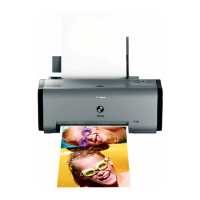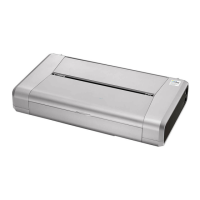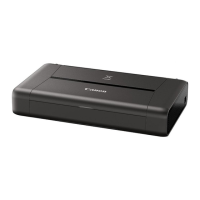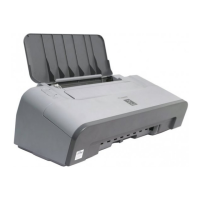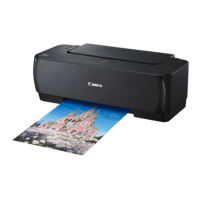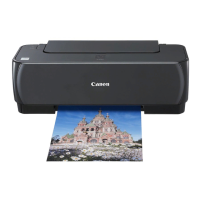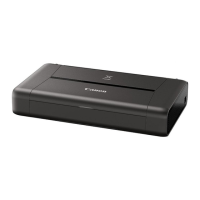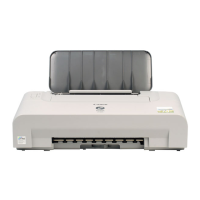Do you have a question about the Canon IP100 and is the answer not in the manual?
Describes the capabilities and technical specifications of the WebCAM, including hardware and software features.
Explains how the WebCAM functions as a remote surveillance system, allowing monitoring from anywhere.
Lists all the items included in the WebCAM package, such as the device, adapter, and utility CD.
Provides a visual overview of the entire setup process, outlining sequential steps from hardware to software.
Step-by-step guide for connecting the WebCAM unit, USB camera, and network cable to the system.
Instructions for installing the essential WebCAM utility software from the provided CD.
Overview of the utility's main menu and functions for device setup and management.
Guides users through initial device setup via a wizard, configuring essential parameters.
How to start and access the WebCAM software after installation and initial setup.
Detailed steps for configuring the IP address, subnet mask, and gateway of the WebCAM.
Instructions for setting a static IP address, subnet mask, and gateway for the WebCAM.
Configuring advanced options like device passwords for enhanced security.
Setting and managing device access passwords to control access to the WebCAM.
Adjusting HTTP access and port settings for management and security purposes.
Viewing software details, version information, and refreshing the device list.
Accessing and logging into the WebCAM's web interface, and navigating its main sections.
How to select and view live video streams from connected cameras using ActiveX or Sun Java.
Accessing system status, connection details, event logs, and other diagnostic information.
Configuring essential camera parameters like image size and network settings including IP and DNS.
Exploring advanced configurations like event notifications, motion detection, and image recording.
Inputting server details for email and FTP functionality, including test mail setup.
Configuring system time, automatic restarts, and SNMP settings for network management.
Enabling the image server for direct internet viewing and selecting the interface language.
Accessing firmware information, managing settings, and performing backups or resets.
Instructions on how to access camera images using PDA or mobile phones.
Step-by-step guide to install the MultiMonitor application for managing multiple WebCAMs.
Overview of the MultiMonitor program's capabilities for network-based camera management.
Detecting and listing connected WebCAMs, showing their online or offline status.
Manually adding devices to monitor via IP address or server address within MultiMonitor.
Deleting devices from the MultiMonitor list when they are no longer needed.
Modifying connection parameters like host address and port number for monitored devices.
Adjusting camera-specific settings such as image zoom, rotation, and frame rate.
Configuring motion detection features, sensitivity, and object tracking within MultiMonitor.
Setting up automatic image recording upon motion detection and configuring storage options.
Configuring email alerts for events detected by MultiMonitor, including sender and recipient details.
Setting up SNMP parameters such as host name, port, location, and manager for device management.
Controlling camera movement (pan/tilt) and recording current images via the MultiMonitor interface.
Zooming into specific areas of the live video feed for detailed viewing.
Changing between large and small icon displays for organizing monitored cameras.
Viewing the system event log for selected WebCAMs within the MultiMonitor interface.
Configuring SNMP community name and polling interval for network monitoring.
Managing user accounts and changing passwords for MultiMonitor access control.
How users can change their own passwords for accessing the MultiMonitor software.
Adding, deleting, and assigning permissions to user accounts for MultiMonitor access.
Accessing software version, copyright information, and product service contact details.
Creating desktop shortcuts for quick camera viewing using a drag-and-drop feature.
Essential steps for configuring routers to allow internet access to the WebCAM.
Specific instructions for configuring 3Com routers to enable WebCAM access.
Specific instructions for configuring Belkin routers to enable WebCAM access.
Specific instructions for configuring D-Link routers to enable WebCAM access.
Specific instructions for configuring Dell routers to enable WebCAM access.
Specific instructions for configuring Linksys routers to enable WebCAM access.
Specific instructions for configuring Microsoft routers to enable WebCAM access.
Specific instructions for configuring NETGEAR routers to enable WebCAM access.
Specific instructions for configuring SMC routers to enable WebCAM access.
Step-by-step guide to update firmware using the WebCAM's web interface.
Explanation of IP address structure, network classes, host IDs, and their functions.
Details on subnetting techniques and the function of subnet masks in network segmentation.
Definitions of technical terms used throughout the WebCAM user manual.
Describes the capabilities and technical specifications of the WebCAM, including hardware and software features.
Explains how the WebCAM functions as a remote surveillance system, allowing monitoring from anywhere.
Lists all the items included in the WebCAM package, such as the device, adapter, and utility CD.
Provides a visual overview of the entire setup process, outlining sequential steps from hardware to software.
Step-by-step guide for connecting the WebCAM unit, USB camera, and network cable to the system.
Instructions for installing the essential WebCAM utility software from the provided CD.
Overview of the utility's main menu and functions for device setup and management.
Guides users through initial device setup via a wizard, configuring essential parameters.
How to start and access the WebCAM software after installation and initial setup.
Detailed steps for configuring the IP address, subnet mask, and gateway of the WebCAM.
Instructions for setting a static IP address, subnet mask, and gateway for the WebCAM.
Configuring advanced options like device passwords for enhanced security.
Setting and managing device access passwords to control access to the WebCAM.
Adjusting HTTP access and port settings for management and security purposes.
Viewing software details, version information, and refreshing the device list.
Accessing and logging into the WebCAM's web interface, and navigating its main sections.
How to select and view live video streams from connected cameras using ActiveX or Sun Java.
Accessing system status, connection details, event logs, and other diagnostic information.
Configuring essential camera parameters like image size and network settings including IP and DNS.
Exploring advanced configurations like event notifications, motion detection, and image recording.
Inputting server details for email and FTP functionality, including test mail setup.
Configuring system time, automatic restarts, and SNMP settings for network management.
Enabling the image server for direct internet viewing and selecting the interface language.
Accessing firmware information, managing settings, and performing backups or resets.
Instructions on how to access camera images using PDA or mobile phones.
Step-by-step guide to install the MultiMonitor application for managing multiple WebCAMs.
Overview of the MultiMonitor program's capabilities for network-based camera management.
Detecting and listing connected WebCAMs, showing their online or offline status.
Manually adding devices to monitor via IP address or server address within MultiMonitor.
Deleting devices from the MultiMonitor list when they are no longer needed.
Modifying connection parameters like host address and port number for monitored devices.
Adjusting camera-specific settings such as image zoom, rotation, and frame rate.
Configuring motion detection features, sensitivity, and object tracking within MultiMonitor.
Setting up automatic image recording upon motion detection and configuring storage options.
Configuring email alerts for events detected by MultiMonitor, including sender and recipient details.
Setting up SNMP parameters such as host name, port, location, and manager for device management.
Controlling camera movement (pan/tilt) and recording current images via the MultiMonitor interface.
Zooming into specific areas of the live video feed for detailed viewing.
Changing between large and small icon displays for organizing monitored cameras.
Viewing the system event log for selected WebCAMs within the MultiMonitor interface.
Configuring SNMP community name and polling interval for network monitoring.
Managing user accounts and changing passwords for MultiMonitor access control.
How users can change their own passwords for accessing the MultiMonitor software.
Adding, deleting, and assigning permissions to user accounts for MultiMonitor access.
Accessing software version, copyright information, and product service contact details.
Creating desktop shortcuts for quick camera viewing using a drag-and-drop feature.
Essential steps for configuring routers to allow internet access to the WebCAM.
Specific instructions for configuring 3Com routers to enable WebCAM access.
Specific instructions for configuring Belkin routers to enable WebCAM access.
Specific instructions for configuring D-Link routers to enable WebCAM access.
Specific instructions for configuring Dell routers to enable WebCAM access.
Specific instructions for configuring Linksys routers to enable WebCAM access.
Specific instructions for configuring Microsoft routers to enable WebCAM access.
Specific instructions for configuring NETGEAR routers to enable WebCAM access.
Specific instructions for configuring SMC routers to enable WebCAM access.
Step-by-step guide to update firmware using the WebCAM's web interface.
Explanation of IP address structure, network classes, host IDs, and their functions.
Details on subnetting techniques and the function of subnet masks in network segmentation.
Definitions of technical terms used throughout the WebCAM user manual.
| Print Technology | Inkjet |
|---|---|
| Max Print Resolution | 9600 x 2400 dpi |
| Print Speed (Black) | 20 ppm |
| Print Speed (Color) | 14 ppm |
| Portable | Yes |
| Ink Droplet Size | 1 picoliter |
| Input Paper Capacity | 50 sheets |
| Duplex Printing | Manual |
| Connectivity | USB |
| Weight | 4.4 lbs |
| Paper Sizes | A4, Letter, Legal, Envelopes |
| Paper Weight | 64-105 g/m² |
| Operating Temperature | 5-35°C |
| Operating Humidity | 10-90% RH |
| Power Consumption | Approx. 9 W (Printing) |
| Ink Cartridges | PGI-35 Black, CLI-36 Color |

